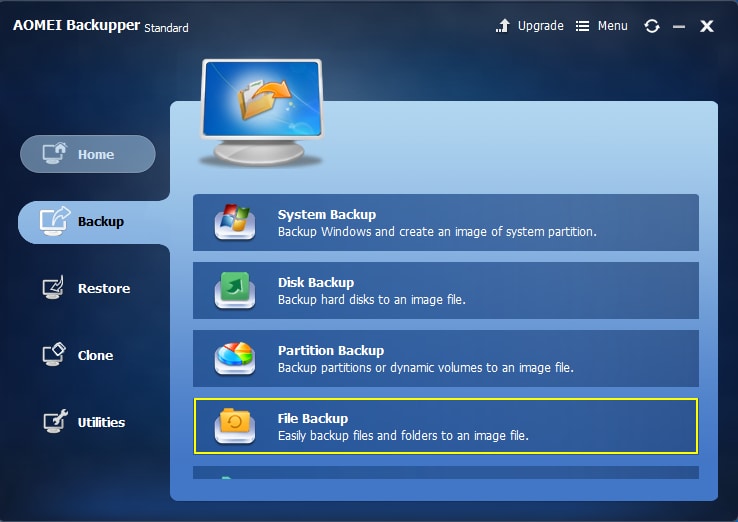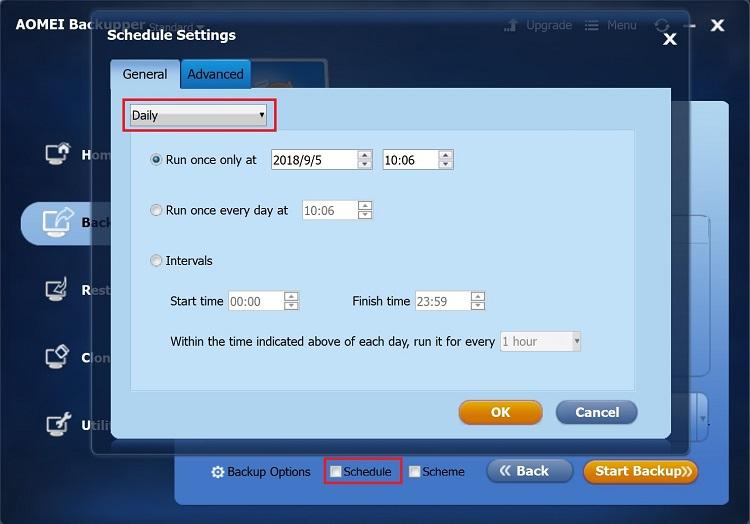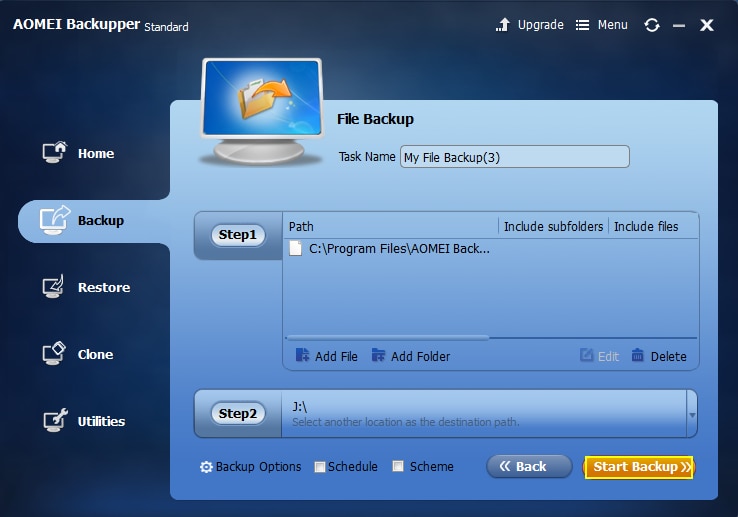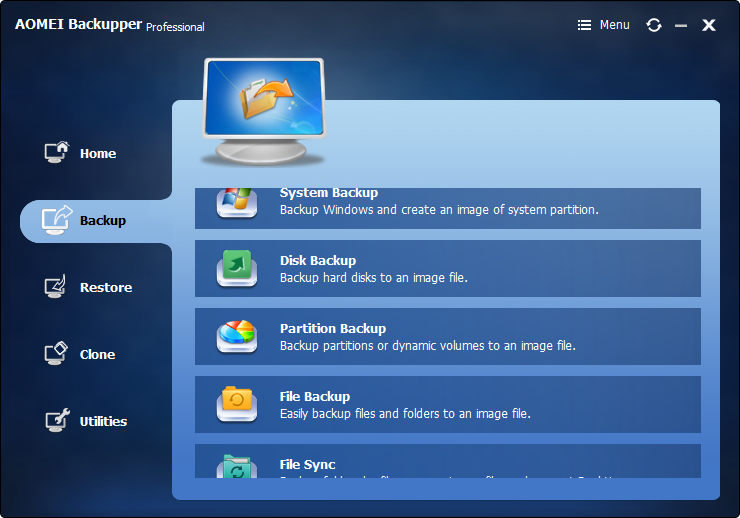How to Backup Files to OneDrive Automatically?
In the last few years, the way we backup and transfer our content has changed drastically. Instead of taking a backup on external storage, users prefer to upload their data to the cloud. It lets them access their important data files from different platforms seamlessly. OneDrive is a popular cloud-based file-sharing platform that provides an excellent way to transfer or backup content. Therefore, one can simply backup files to OneDrive and utilize this platform as per their convenience.
What Is Microsoft Onedrive and Do I Need It?
OneDrive is a popular cloud-based service that is hosted by Microsoft. Earlier known as SkyDrive, it can be used to upload your files to the cloud and can be accessed from multiple platforms. The file-hosting service is more than 10 years old and provides support in multiple languages.
Users get a free space of 5 GB on OneDrive for free. Later, they can pay for a premium plan to get more space. It has a distinctive backup and recovery service for various devices that can be used to backup files to OneDrive from Windows, Android, or iOS devices.
What are the benefits of backup files to OneDrive?
- Since OneDrive is a cloud-based service, you can access the shared files at any time and anywhere.
- Furthermore, it can be accessed on almost every device, letting users perform a cross-platform transfer on the go.
- With the support of Microsoft’s reliable services, OneDrive has added security support.
- While your local storage might get corrupted from a malware attack, your data on OneDrive will stay 100% protected and available all the time.
- One of the best things about OneDrive is its easy accessibility and easy backup and restoring process.
- Also, it provides free storage of 5 GB to every user. You can also buy added space by going with a premium subscription.

All of this makes OneDrive one of the best solutions to backup your data in a fast, secure, and reliable way.
How to Use OneDrive for Backup on Windows?
Taking a backup of your files to OneDrive is pretty easy. Even though the process is quite similar in all the versions of Windows, we have taken an example of Windows 7 in this tutorial. You can either manually transfer files to OneDrive or sync your data as well. Let's understand how to backup files to OneDrive in a stepwise manner.
Download and Install OneDrive
To back up files to OneDrive, you need to start by downloading it on your system and perform its setup. It can be done by following these steps:
- Visit the Microsoft OneDrive website right here and download it on your system. Make sure that you pick the relevant version of Windows.
- Open the installer and agree to the terms and conditions. Click on the "Get Started" button to initiate the setup.
- Provide the details of your Microsoft/live account to sign in. If you don't have an account, you can always sign-up from the interface as well.
- In the next window, you can provide the location where you want to install OneDrive. By default, it will be installed in C drive, but you can also change the location.

Install OneDrive
- After providing your location, click on the "Next" button to continue.
- Choose the data you wish to sync on OneDrive. You can either choose to sync all files and folders or manually select the files you wish to sync with OneDrive.
- After proceeding, you will get the following window. Simply enable the option of "Let me use OneDrive to fetch any of my files on this PC". This will let you fetch (or browse) your files by connecting to any other computer.
- As you will click on the "Done" button, it will conclude the setup. Now, you can access OneDrive and use it to backup your data.

Access OneDrive
Add Files & Folders to the OneDrive Desktop
After installing OneDrive on your Windows system, you can easily backup files to OneDrive by following these steps:
- After installing the OneDrive desktop application on your PC, you can access it anytime. The easiest way to do it is by simply selecting its icon from the taskbar shortcuts. Just right-click its icon and open it.
- Alternatively, you can also access it from the Start Menu. There would also be a dedicated folder for OneDrive that you can open from Windows Explorer.
- After opening the OneDrive folder, you can simply drag and drop the files that you want to save on the cloud. The folder will automatically be in sync with your cloud storage.
- You can also copy any file and paste it into the OneDrive folder manually as well.

Move files to OneDrive
Configure the OneDrive Desktop Application
If you want to make the most out of OneDrive space, then you might need to configure it. You can simply optimize your OneDrive application by following these simple steps:
- Firstly, right-click the OneDrive icon on your taskbar shortcuts and open its "Settings".
- It will open the Settings window from where you can configure your drive. You can choose to start OneDrive automatically, enable/disable the fetching of files, unlink drive, and perform various other tasks.
- From the "Account" category, you can manually select the folders you want to sync with the drive.
- By clicking on the "Choose folders" button, you will get the following window. From here, you can select the folders you want to sync and hide the unselected folders to save space.

How to Set up OneDrive
Protect Folders
- Microsoft OneDrive launches a new feature - folder protection which can sync your documents, desktop, and picture folders in different devices to protect your important data.
- Go to Settings > Auto-save where the folder protection feature can be found. You can also schedule automatic backups of photos and videos from connected external devices as well as every captured screenshot on this PC.
- Click "Update folders" to set up the protection of important folders. All selected folders will be synced in OneDrive. Select what you want and hit on "Start protection" to keep your important folders secure.

Sync and protect important folders
There are plenty of ways to backup data on the cloud or external storage. Nevertheless, there are times when we end up losing our data without having its backup. In situations like these, you can take the assistance of
Recoverit Data Recovery Software to retrieve your lost data files. Already trusted by millions of people the world over, it is a safe and reliable way to recover your lost files. It performs an extensive and in-depth recovery process without causing any harm to your system. You can check out this page to know about
how to recover lost files on a PC.
Backup Files to OneDrive with AOMEI Backupper
Regular backup can undoubtedly help you protect your precious pictures, videos, files, and any other important data. Through it, you can fetch them easily without any harm to your computer.
For the sake of data safety, it is encouraged to back up data to different locations like external hard drives, NAS drives, and memory cards. Besides, you can also choose other cloud backup services to backup and sync files, such as Dropbox, Google Drive, SugarSync, Cloud, Box, and hubiC, etc.
However, if you decide multiple backup tasks regularly, it would be a cumbersome and tedious job for you. Moreover, each time you do a backup, the only full backup could be realized without the help of data backup software, that's to say, you have to backup all old and new data together. It will cost you a lot of time and energy. Obviously, it is meaningless and unnecessary.
Here, we prefer to strongly recommend a data backup program for Windows - AOMEI Backupper Professional. Thanks to its intuitive interface, user-friendly designs, and advanced technology, it will absolutely help you make the backup job much easier and securer. It makes it possible to do incremental and differential backup for your data on an internal computer hard disk, external hard drive, portable storage devices like memory card, and any other storage media. What's more, file backup and sync is allowed. You can schedule full, incremental, and differential backups on a daily, weekly, or monthly basis, which can greatly save your time and energy.
- Allows you to take automatic, full, incremental, and differential backups of system, disk, partition, and files.
- Supports system restore, disk restore, dissimilar hardware restore, partition restore, and selective file restore.
- Supports disk clone, partition/volume clone, flexible clone, system clone, and command line clone.
- Supports Windows 10, Windows 8.1/8, Windows 7, Vista, and XP (all editions, 32/64-bit)
OneDrive Backup Solution - How to Backup Files Automatically to OneDrive
Before starting OneDrive automatic backup, download and install the OneDrive backup tool firstly. Then, let's make backups of files to OneDrive together with the following simple steps.
Step 1. Select File Backup
To use OneDrive for backup, launch AOMEI Backupper Professional and then click "File Backup" under the "Backup" tab.

OneDrive Backup - Select file backup
Step 2. Add files and select OneDrive
In this interface, you can edit the Task Name to identify the job. More importantly, you can click "Add File" or "Add Folder" to choose the files to be backed up. Then, hit on the grey down arrow on "Step 2" to select OneDrive as your backup destination.

OneDrive Backup - Select OneDrive for cloud backup
Step 3. Schedule OneDrive auto backup
Click "Schedule", and you can see a pop-up window, on which you can set up OneDrive backup automatically on a daily, weekly, or monthly basis. Choose the date and time as you wish. Besides, different backup types can be ticked, incremental backup, full backup, and differential backup.

OneDrive Backup - Set up OneDrive auto backup
Step 4. Start OneDrive backup
After the setup, you just need to click on "Start Backup" and your computer backs up your wanted files to OneDrive immediately. It will also keep automatic backups of the selected files based on your settings. After the backup task, you can also go on disk or system backup at any time.

OneDrive Backup - Start OneDrive backup
By following these steps, you can backup files to OneDrive and keep your data safe without much trouble.
Data Backup Services
- Computer Backup
- Hard Drive Backup
- Mac Backup
- Cloud Backup














 ChatGPT
ChatGPT
 Perplexity
Perplexity
 Google AI Mode
Google AI Mode
 Grok
Grok
























Amy Dennis
staff Editor